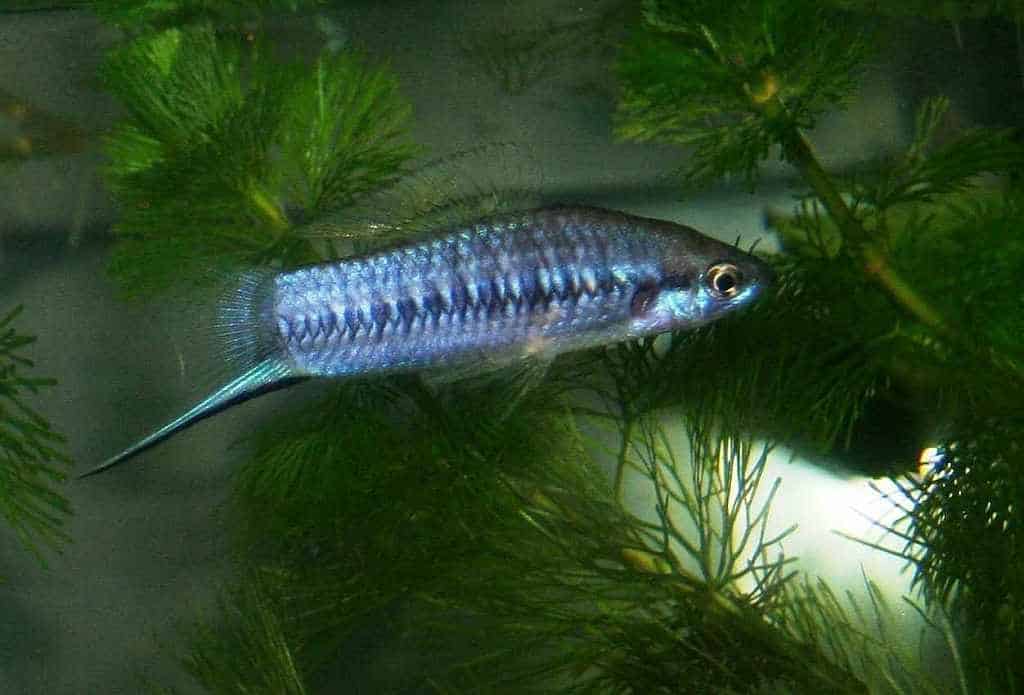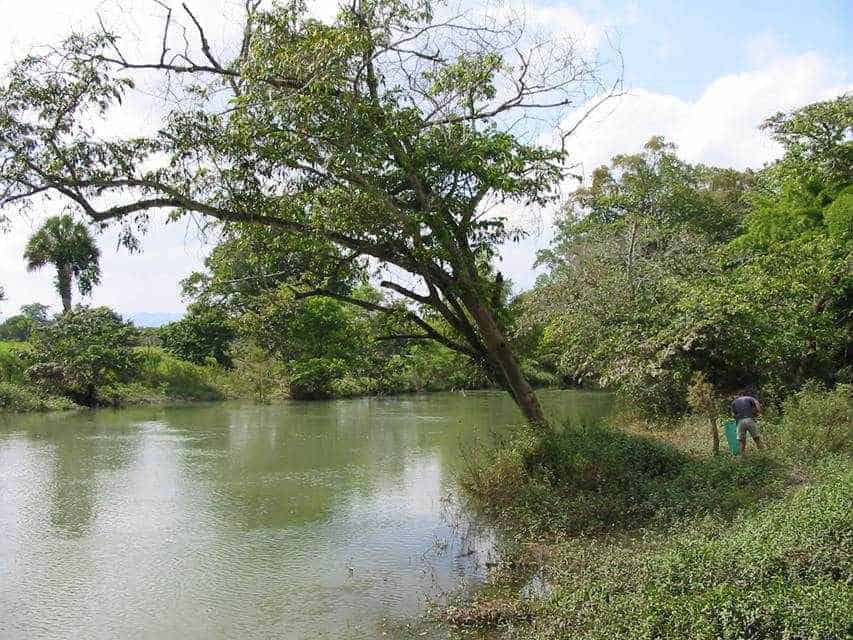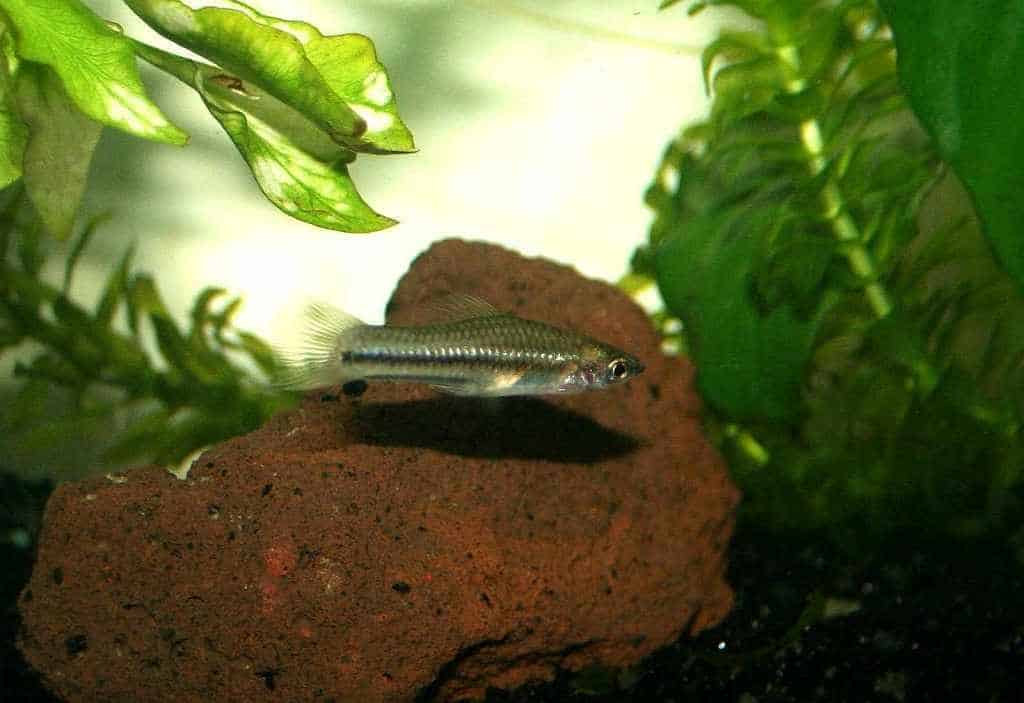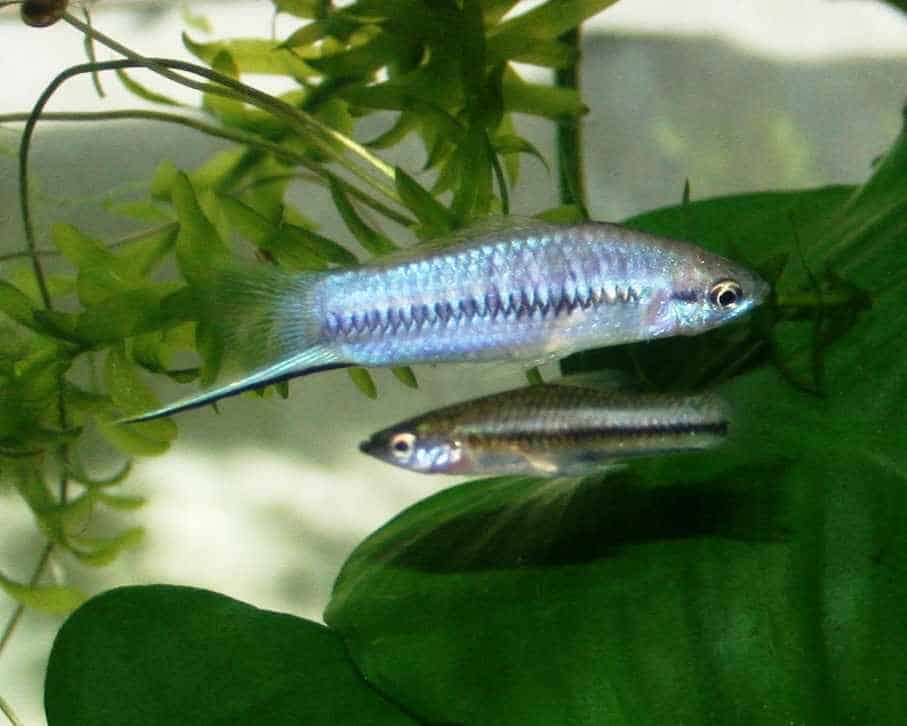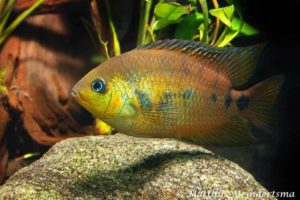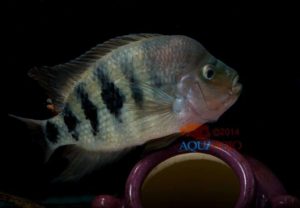Xiphophorus multilineatus
Xiphophorus multilineatus: Rauchenberger,Kalman&Morizot 1990.
Etymology: Xiphophorus can be split into 2 words. From Greek: xiphos = Sword and from Greek pherein = carry; Combined thus means Swordbearer and this refers to the gonopodium in the male. Multilineatus means multiple stripes.
Scientific description: Mary Rauchenberger,Klaus Kallman & Donald c Morizot (1990). Monophyly and geography of the Rio Panuco basic swordtails( genus Xiphophorus) With description of four new species ‘Am.Mus.Novit no 2975:41pp.
Distribution
Mexico: Rio Choy drainage,Rio Panuco drainage,San Louis Potosi State.
These are photos of the biotope where X.multilineatus occurs.

This little fish is found in this very flowing river.

Size
Males 25 mm-40 mm. There are two different males size or Alpha males. Small or less dominant men hence the two different types. Females 40 mm.
Care
This is one of the most difficult Xiphophorus species to breed. The reason this is so is that this Xiphophorus species is very stress sensitive. Is very sensitive to water changes, pay attention to the temperature. Can best be kept in a special aquarium, otherwise it will quickly become the less suitable of the other species and crawl between the plants and therefore starve. Cannot tolerate very high temperatures in our country. In summer, this Xiphophorus species is better kept or grown outside.
After several times having had this Xiphophorus species in my aquariums and by means of different experiences with fellow breeders. This Xiphophorus is best kept in a special aquarium set up for this purpose. The reason for this is mainly that it is suppressed by other species.
My strain today consists of 2 males and 4 females that I got to Holland via Kees de Jong of Mr. Macalster from England to my specially decorated aquarium. It is a Xiphophorus species that has certainly improved my collection and made it more colorful. Now I still have to try to let this fish reproduce, I did this in the past but due to the heat our country had last summer my tribe disappeared. Fortunately I do a lot together with Johan Ezeman to exchange fish and share experiences about this Xiphophorus species. He dared to keep them outside last summer, I was too careful with my fish and did not dare to do so. Johan Ezeman kept everything alive and with me everything was gone by the heat of last June. Johan’s young are now swimming again and growing well and before you know it his aquarium is full. This of course gives me hope again and in the future I will certainly achieve better results with this beautiful Xiphophorus species, so you see how important it can sometimes be to exchange thoughts with other breeders of such a rare fish.
The Aquarium
The dimensions of my species aquarium are 60 cm by 40 cm by 30 cm. This aquarium is very well supplied with many different plants where the fish can easily retreat. The aquarium contains an Eheim internal filter and is provided with oxygen through air bubbles. The lighting in the aquarium is Philips warm white fluorescent tubes (color 29) 15 watts. The bottom is filled with river sand, which can be purchased at any hardware store. As co-inhabitants several colors of apple snails and two ancisteruses.
Diet
Live or frozen artemia,cyclops, daphnia, red,white or black mosquito larvae. For dry food I use a very high value dry food provided with lots of protein, minerals and various vitamins. The young ones I give dried artemia or live artemia napaulin available in any good aquarium store. Furthermore I give them algae tablets with 10% spiralina processed.
Breeding
With proper care, the female gives birth to between 10 to 20 young every month. These young grow into adult fish in 4 months. But after 1 year the fish have grown into very beautiful Xiphophorus. And then proceed to reproduce this very beautiful species.
Author
Leo van der Meer
Copyright images
Leo van der Meer
Literature
Derek en Pat Lambert:Platies and Swordtails.
